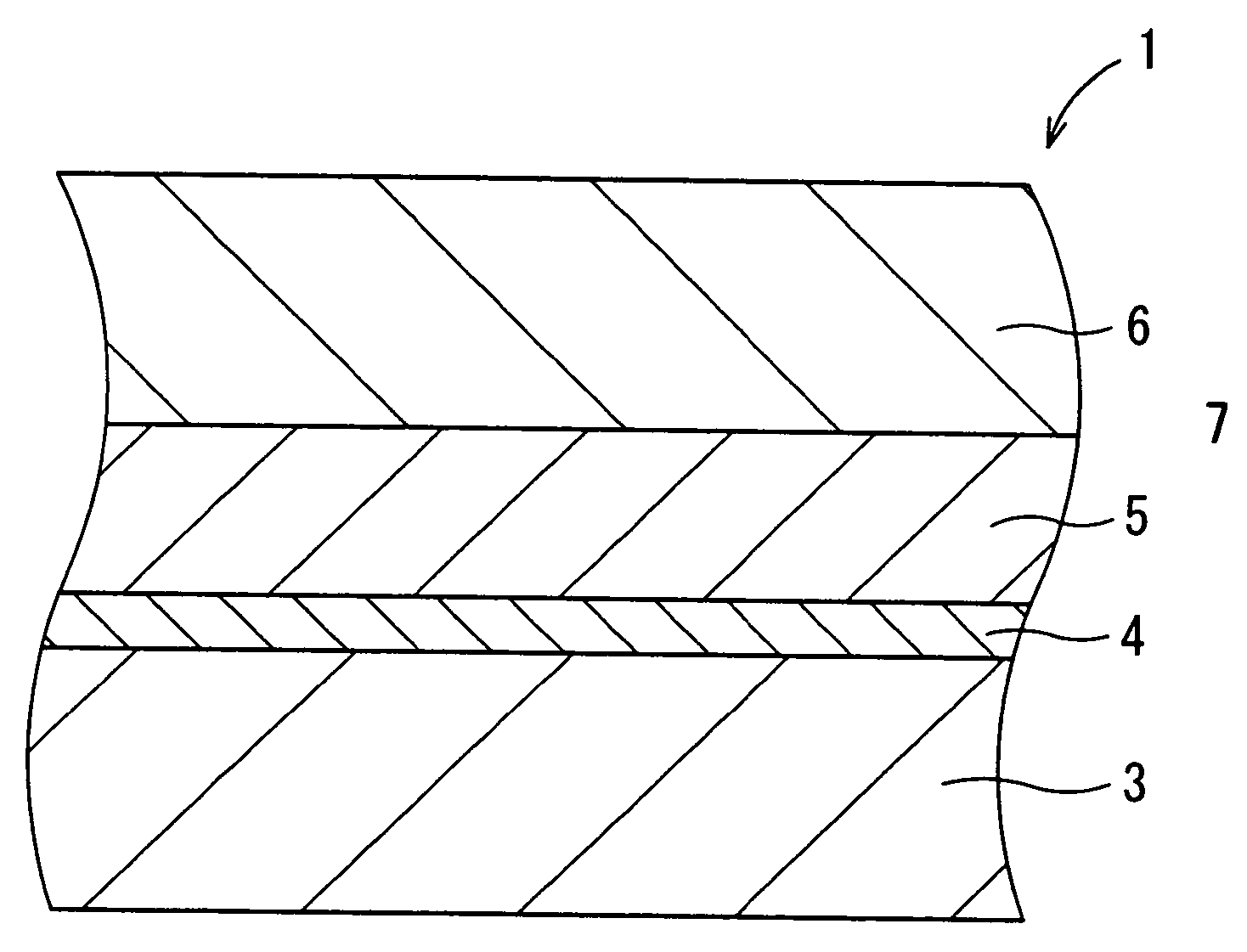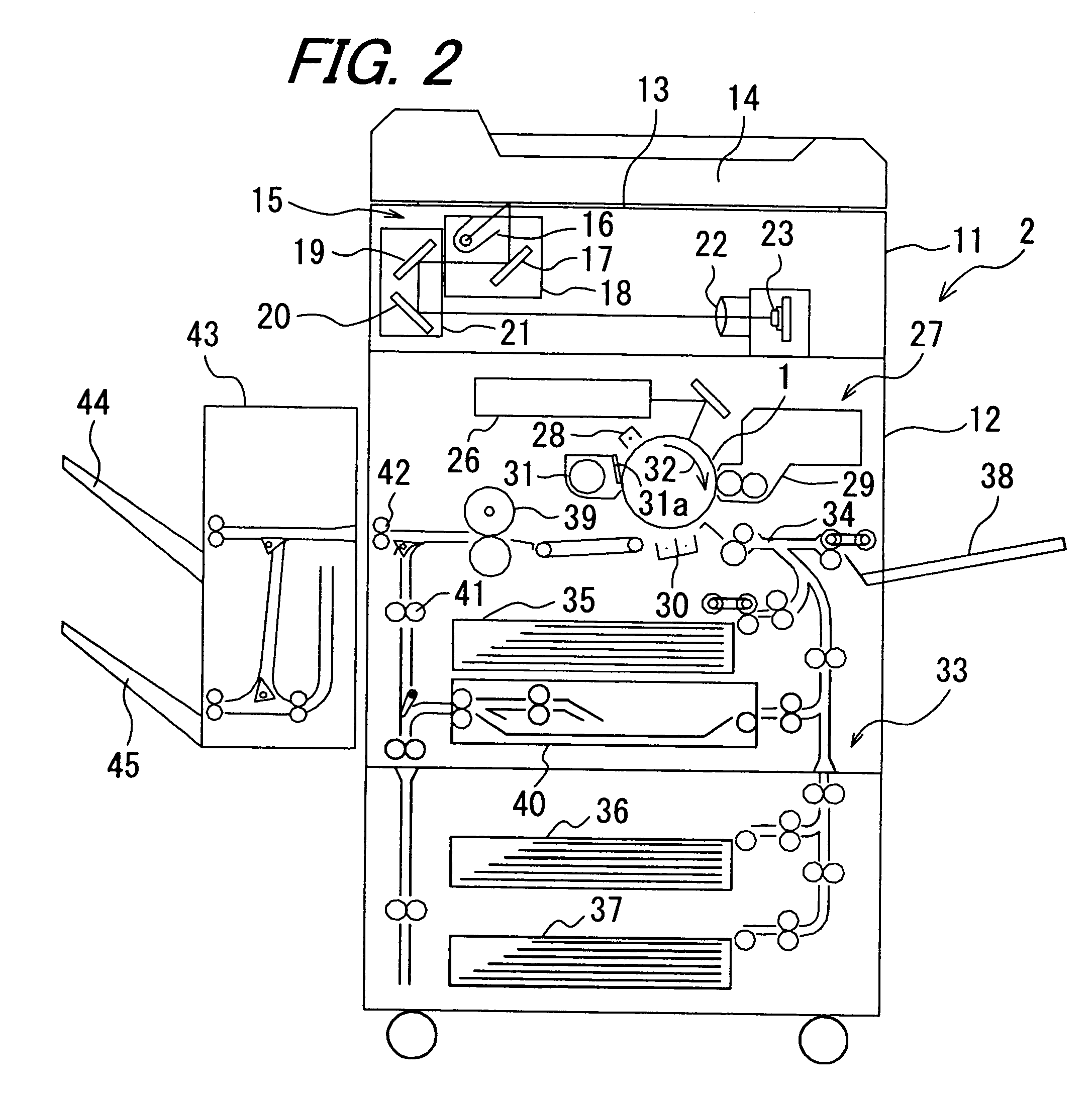Electrophotographic photoreceptor and image forming apparatus having the same
a photoreceptor and image forming technology, applied in the direction of electrographic process apparatus, instruments, optics, etc., can solve the problems of undefined substantially suitable range, restricted prior art, and unsuitable range, and achieve excellent wear resistance life and not causing injury
- Summary
- Abstract
- Description
- Claims
- Application Information
AI Technical Summary
Benefits of technology
Problems solved by technology
Method used
Image
Examples
example
[0071] The invention will be explained with reference to examples.
[0072] At first, description is to be made for light sensitive bodies provided as examples and comparative examples by forming photosensitive layers under various conditions on cylindrical conductive substrates made of aluminum 30 mm in diameter and 346 mm in length.
examples 1 to 3
[0073] 3 parts by weight of titanium oxide TTO-MI-1 (dendritic rutile type titanium oxide treated at the surface with Al2O3 and ZrO2, titanium ingredient 85%, manufactured by Ishihara Sangyo Co. Ltd.) and 3 parts by weight of an alcohol soluble nylon resin CM 8000 (manufactured by Toray Industries Inc.) were added to a mixed solvent of 60 parts by weight of methyl alcohol and 40 parts by weight of 1,3-dioxolane, which was dispersed by a paint shaker for 10 hours to prepare a coating solution for undercoat layer. The coating solution was filled in a coating vessel, a conducive substrate was dipped therein and then pulled up, and spontaneously dried to form an undercoat layer having a layer thickness of 0.9 μm.
[0074] 10 parts of a butyral resin S-LEC BL-2 (manufactured by Sekisui Chemical Co. Ltd.), 1400 parts by weight of 1,3-dioxolane, and 15 parts by weight of titanyl phthalocyanine represented by the following structural formula (1) were put to dispersion treatment by a ball mill...
example 2
[0076] An undercoat layer and a charge generating layer were formed in the same manner as in Example 1. Then, 100 parts by weight of an enamine series compound shown by the following structural formula (3) as the charge transporting substance, and 99 parts by weight and 81 parts by weight of two types of polycarbonate resins GK-700 and GH503 (manufactured by Idemitsu Kosan Co., Ltd.) were dissolved in 1050 parts by weight of tetrahydrofuran to prepare a coating solution for charge transporting layer. Using the coating solution, a photoreceptor of Example 2 was prepared in the same manner as in Example 1.
PUM
 Login to View More
Login to View More Abstract
Description
Claims
Application Information
 Login to View More
Login to View More - R&D
- Intellectual Property
- Life Sciences
- Materials
- Tech Scout
- Unparalleled Data Quality
- Higher Quality Content
- 60% Fewer Hallucinations
Browse by: Latest US Patents, China's latest patents, Technical Efficacy Thesaurus, Application Domain, Technology Topic, Popular Technical Reports.
© 2025 PatSnap. All rights reserved.Legal|Privacy policy|Modern Slavery Act Transparency Statement|Sitemap|About US| Contact US: help@patsnap.com



